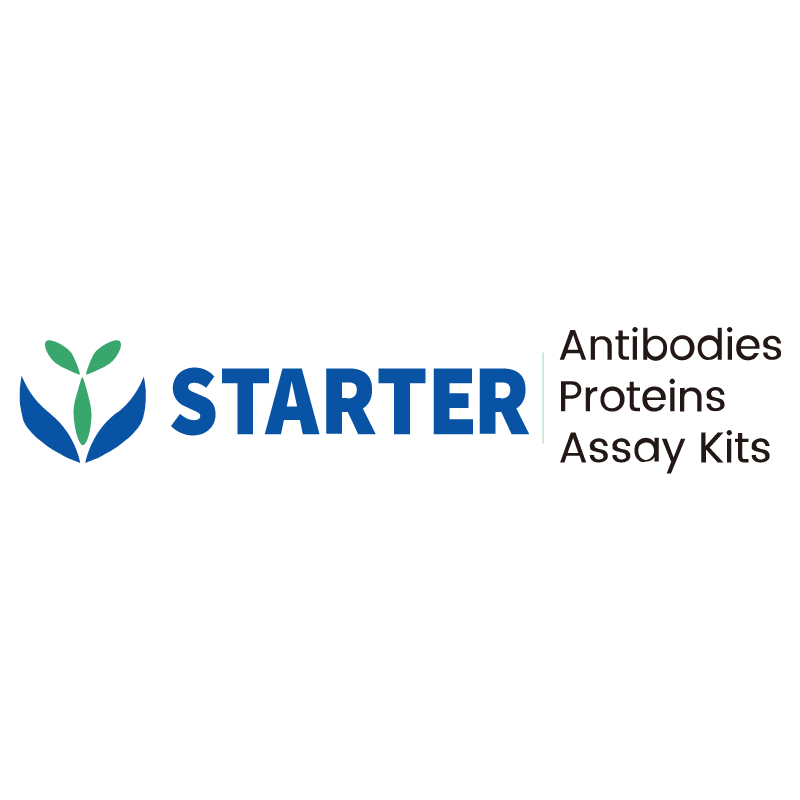IHC shows positive staining in paraffin-embedded human colon. Anti-Mannose Receptor antibody was used at 1/1000 dilution, followed by a HRP Polymer for Mouse & Rabbit IgG (ready to use). Counterstained with hematoxylin. Heat mediated antigen retrieval with Tris/EDTA buffer pH9.0 was performed before commencing with IHC staining protocol.
Product Details
Product Details
Product Specification
| Host | Rabbit |
| Antigen | Mannose Receptor |
| Synonyms | Macrophage mannose receptor 1; MMR; C-type lectin domain family 13 member D; C-type lectin domain family 13 member D-like; Human mannose receptor (hMR); Macrophage mannose receptor 1-like protein 1; CD206; CLEC13D; CLEC13DL; MRC1L1; MRC1 |
| Immunogen | Synthetic Peptide |
| Location | Cell membrane |
| Accession | P22897 |
| Clone Number | SDT-2206-52 |
| Antibody Type | Recombinant mAb |
| Isotype | IgG |
| Application | IHC-P |
| Reactivity | Hu |
| Purification | Protein A |
| Concentration | 0.5 mg/ml |
| Conjugation | Unconjugated |
| Physical Appearance | Liquid |
| Storage Buffer | PBS, 40% Glycerol, 0.05% BSA, 0.03% Proclin 300 |
| Stability & Storage | 12 months from date of receipt / reconstitution, -20 °C as supplied |
Dilution
| application | dilution | species |
| IHC-P | 1:1000 | Hu |
Background
The Mannose Receptor is a type of C-type lectin receptor primarily found on the surface of antigen-presenting cells such as macrophages, dendritic cells, and certain endothelial cells. It plays a crucial role in the immune system by recognizing and binding to mannose-rich glycoconjugates present on the surface of pathogens like bacteria, fungi, and viruses. Once bound, the receptor facilitates the internalization and degradation of these pathogens through endocytosis, thereby helping to clear infections and initiate immune responses. Additionally, it is involved in the clearance of apoptotic cell debris by recognizing and binding to mannose residues on glycoproteins released from dying cells. This receptor is also implicated in various inflammatory and immune-related diseases, making it an important target for therapeutic interventions.
Picture
Picture
Immunohistochemistry
IHC shows positive staining in paraffin-embedded human liver. Anti-Mannose Receptor antibody was used at 1/1000 dilution, followed by a HRP Polymer for Mouse & Rabbit IgG (ready to use). Counterstained with hematoxylin. Heat mediated antigen retrieval with Tris/EDTA buffer pH9.0 was performed before commencing with IHC staining protocol.
IHC shows positive staining in paraffin-embedded human placenta. Anti-Mannose Receptor antibody was used at 1/1000 dilution, followed by a HRP Polymer for Mouse & Rabbit IgG (ready to use). Counterstained with hematoxylin. Heat mediated antigen retrieval with Tris/EDTA buffer pH9.0 was performed before commencing with IHC staining protocol.
IHC shows positive staining in paraffin-embedded human spleen. Anti-Mannose Receptor antibody was used at 1/1000 dilution, followed by a HRP Polymer for Mouse & Rabbit IgG (ready to use). Counterstained with hematoxylin. Heat mediated antigen retrieval with Tris/EDTA buffer pH9.0 was performed before commencing with IHC staining protocol.
IHC shows positive staining in paraffin-embedded human cervical squamous cell carcinoma. Anti-Mannose Receptor antibody was used at 1/1000 dilution, followed by a HRP Polymer for Mouse & Rabbit IgG (ready to use). Counterstained with hematoxylin. Heat mediated antigen retrieval with Tris/EDTA buffer pH9.0 was performed before commencing with IHC staining protocol.
IHC shows positive staining in paraffin-embedded human colon cancer. Anti-Mannose Receptor antibody was used at 1/1000 dilution, followed by a HRP Polymer for Mouse & Rabbit IgG (ready to use). Counterstained with hematoxylin. Heat mediated antigen retrieval with Tris/EDTA buffer pH9.0 was performed before commencing with IHC staining protocol.


